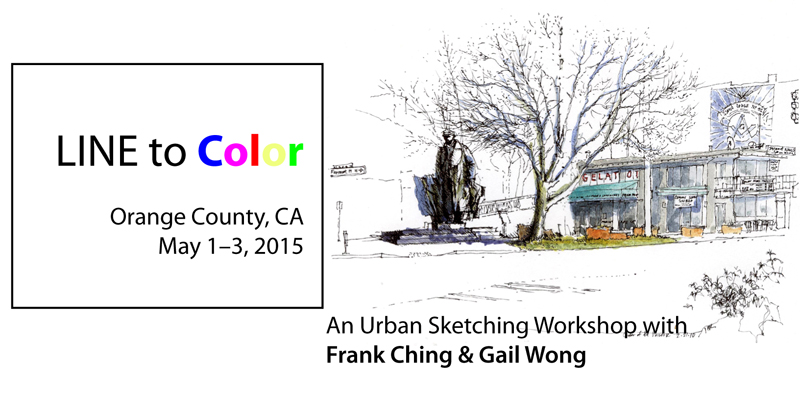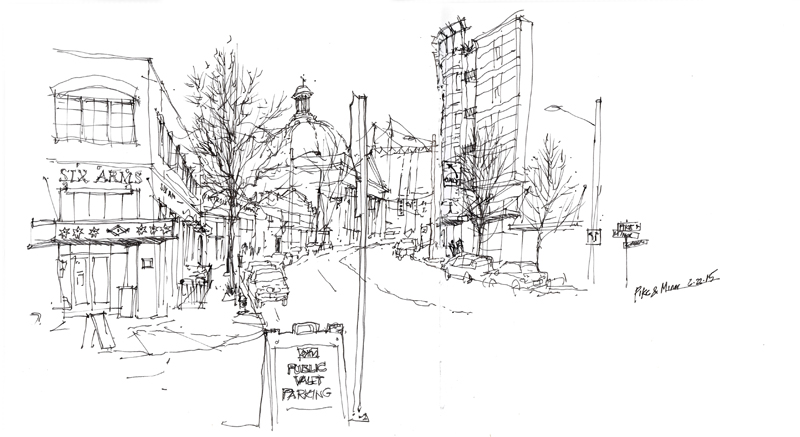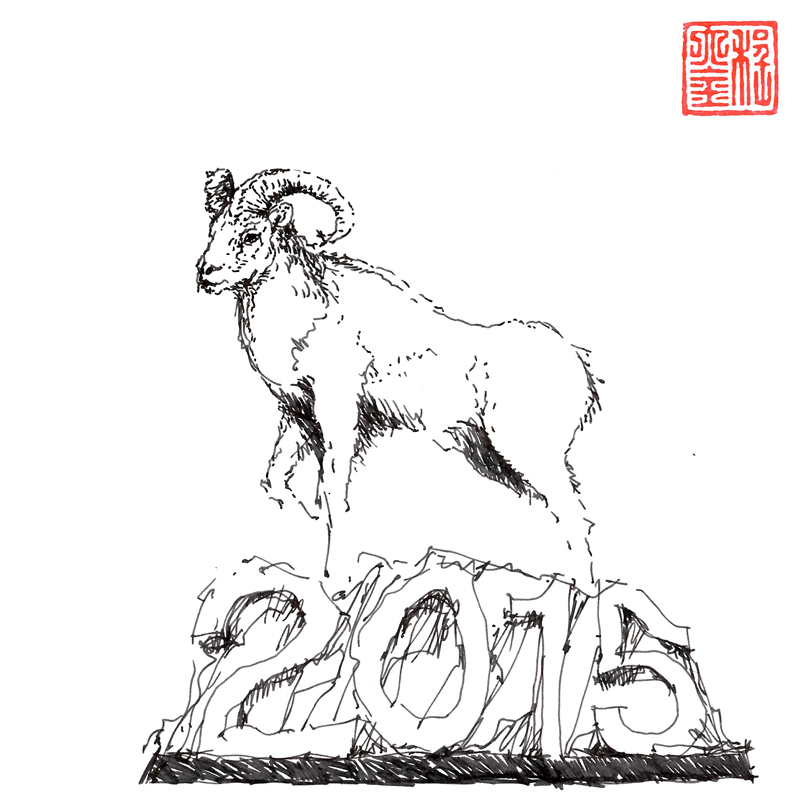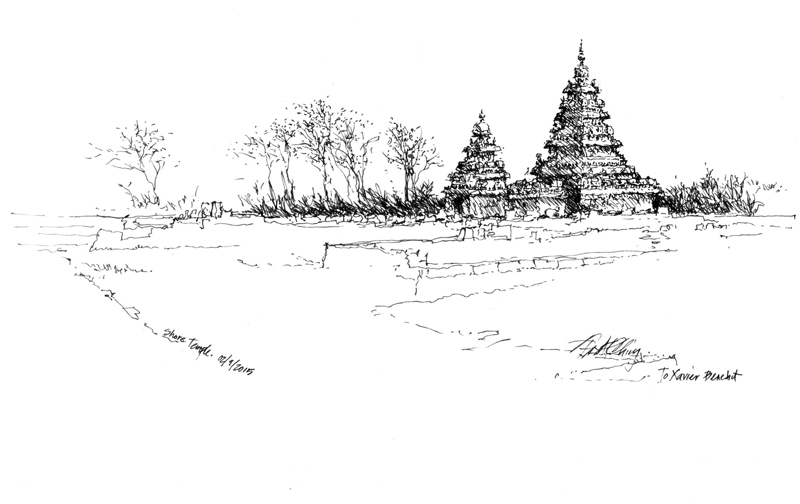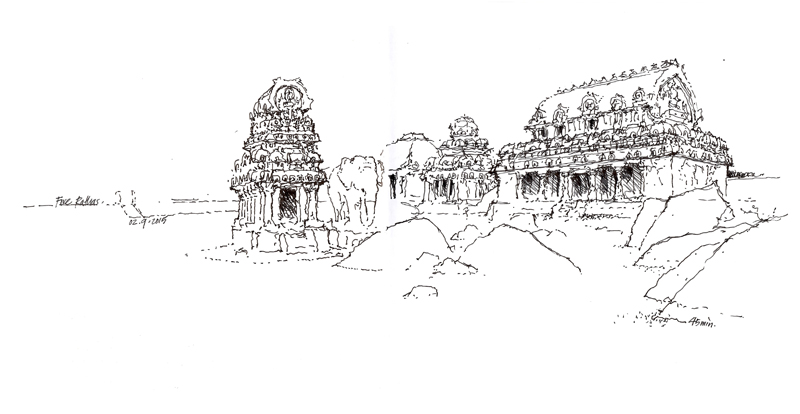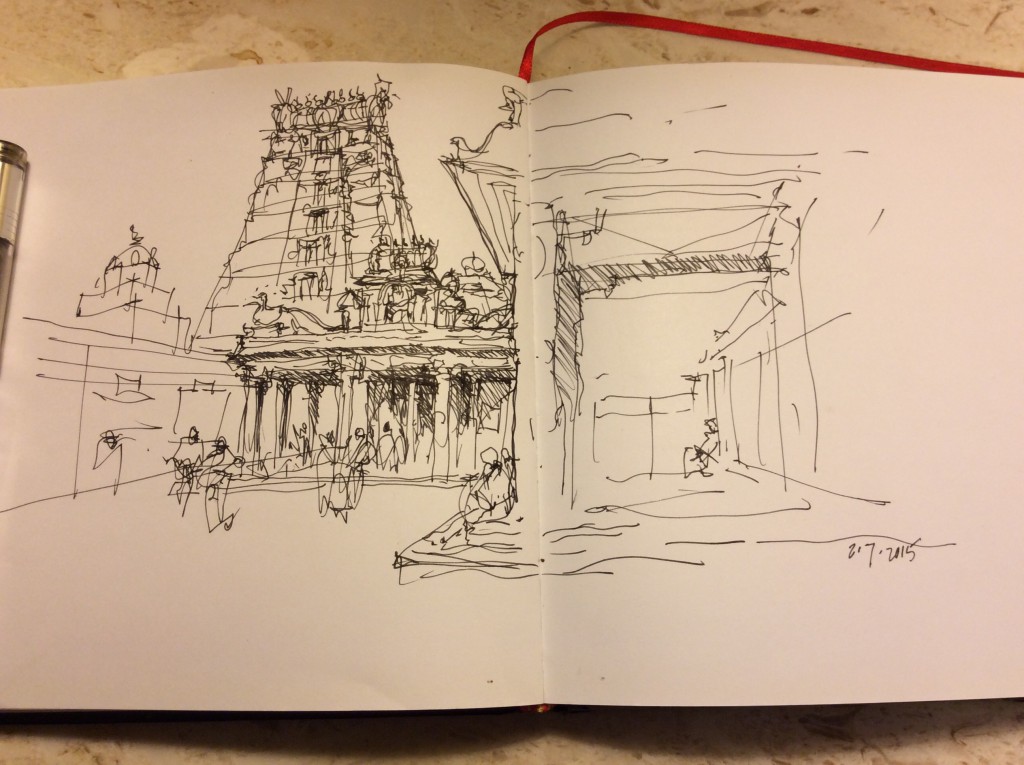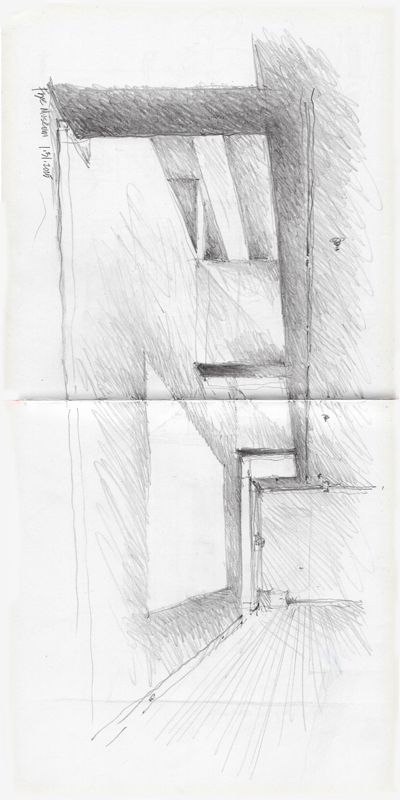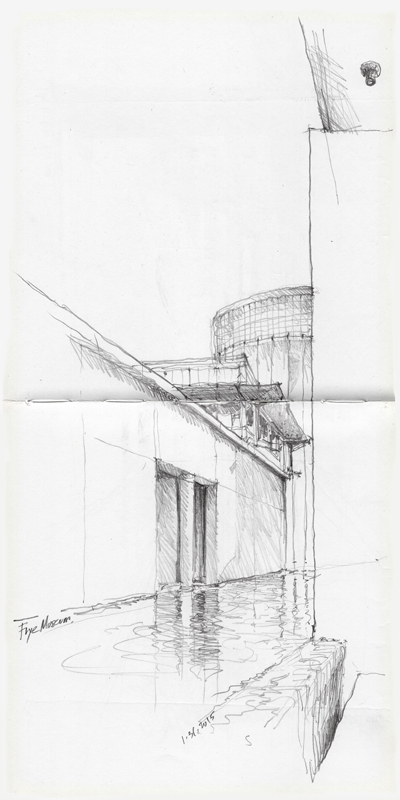Gail Wong and I will be offering a Line to Color workshop in Orange County, CA, May 1–3. We’re excited to be able to explore and sketch locations at Mission San Juan Capistrano, Laguna Beach, and Balboa Beach. This event is being co-hosted by the Orange County Chapter of the AIA. For more information and to sign up, please see <http://workshops.urbansketchers.org/2015/02/line-to-color-workshop-orange-county.html>.
Monthly Archives: February 2015
Pike & Minor
Despite recovering from a bad cold and feeling a bit under the weather, I decided to join the monthly Seattle Urban Sketchers outing this past Sunday. It promised to be an unseasonably warm and sunny day but it was still quite chilly in the late morning when I drew this view of Pike Street in the Capitol Hill neighborhood of Seattle, standing in front of the new Starbucks Roastery, looking east toward the domed First Covenant Church. Not my finest work but merely another step in the long process of learning how to say more with less. There is so much missing in this drawing, so many things that I saw but omitted, and yet, the overall feel for that particular place is still there.
Happy Chinese New Year
The Lunar New Year 2015, the Year of the Sheep (or Ram), looks to be an auspicious year since the sheep is the eighth sign in Chinese astrology and the number “8” is considered to be a very lucky number. And besides, the sheep, which symbolizes loyalty, kindness, wisdom, and prosperity, is my personal Chinese zodiac sign. Kung Hee Fat Choy!
Mamallapuram
After last weekend’s workshop, Xavier Benedict and I took a day trip to Mamallapuram, site of several Hindu shrines and temples. These examples of the stone-carving tradition of Pallava art and architecture are set amid a landscape strewn with mammoth granite boulders on the Bay of Bengal, 35 miles south of Chennai.
The Shore Temple, a Unesco World Heritage Site, is so named because of its siting on a promontory close by the shore of the Bay of Bengal. The 8th-century complex of three temples is famous for its profile surrounded by a low enclosure surmounted by Nandis, seated bulls that serve as the mount of the god Shiva.
Unlike the Shore Temple, which is constructed and carved from granite blocks, the Five Rathas is a 7th-century complex of monolithic rathas (chariots) hewn whole from enormous boulders of granite. These South Indian Dravidian structures, also classified as a UNESCO World Heritage Site, were never completed nor consecrated.
***
Thanks again to Xavier Benedict for his generous and gracious hospitality. For photos of the workshop, see Xavier Benedict’s Facebook page at <https://www.facebook.com/xavier.benedict.581/media_set?set=a.10204523441180918&type=1&pnref=story>.
Kapaleeshwarar Temple
My second attempt at entering India was successful and we began the first of two days of a drawing workshop sponsored by the AARDE foundation. Many thanks to Xavier Benedict for hosting my visit and to the students and architects who persevered and returned to make this weekend possible. We began at the Luz Church, built in 1516, and then moved onto the 7th century Kapaleeshwarar Temple in the Mylapore neighborhood of Chennai. Here is the group in front of the main doorway and a quick study I did of the interior of the temple complex. The temple architecture is a difficult subject because of the multiple layers of sculptural details. The approach has to first establish the geometric framework that holds the details together. Tomorrow we head to Parry’s Corner to visit a prime example of Indo-Saracenic architecture.
Frye Art Museum
A small group of Seattle Urban Sketchers met yesterday at the Frye Art Museum to participate in the 46th World Wide Sketchcrawl. Because only graphite or colored pencils are allowed in the museum, I brought along an old-fashioned mechanical lead holder equipped with a 4B lead.
Switching from a fountain pen to a graphite pencil forced me to adjust my usual approach. Graphite pencils respond to pressure much more readily than an ink pen and encourage the use of tonal values. So the process I used was to first sketch the structure out lightly and then hatch broad areas of gray. I then wend back and darkened selected portions to achieve the desired gradation and contrast. Each of these sketches took about 30 minutes to complete.

